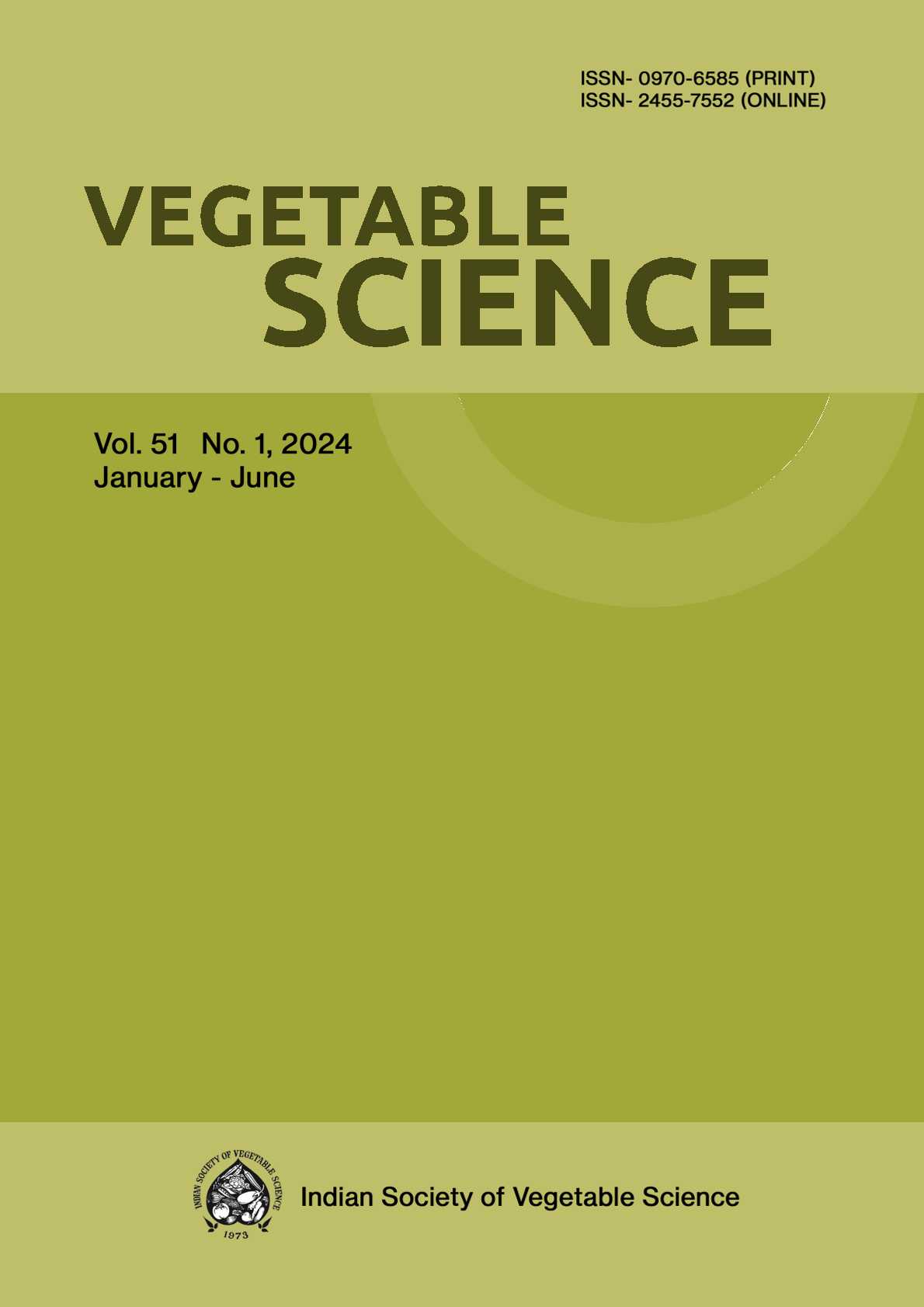Identification of suitable genotype of tomato for middle Gangetic plains of India
DOI:
https://doi.org/10.61180/Keywords:
Tomato, Stability, Regression coefficient, Fruit weight, Fruit YieldAbstract
Twenty one elite lines of tomato were evaluated in Varanasi
during 2010-11 to 2014-15 for important yield traits. Pooled
analysis of variance revealed highly significant genotypic
and environmental effects for all the traits. Variances due to
genotype × environment revealed significant differences
for number of fruits/plant and fruit yield/plant. Variance due
to environment (linear) component was highly significant
for all the traits. Variance due to genotype × environment
(linear) was significant. The genotypes Kashi Amrit and
Azad T 5 revealed stability for average fruit weight and the
genotype H 24 for number of fruits/plant. The genotypes H
86, Kashi Amrit, Pusa Sadabahar were the stable genotypes
for fruit yield/plant. The genotypes BT 120, NDTVR 60,
Punjab Upma, Pusa Sadabahar were responsive genotypes
for average fruit weight and the genotype GT was responsive
for number of fruits/plant. The genotypes FLA 7171, Punjab
Upma, Selection 7 were responsive genotypes for fruit yield/
plant.
Downloads
Published
Issue
Section
License

This work is licensed under a Creative Commons Attribution-NonCommercial-NoDerivatives 4.0 International License.






